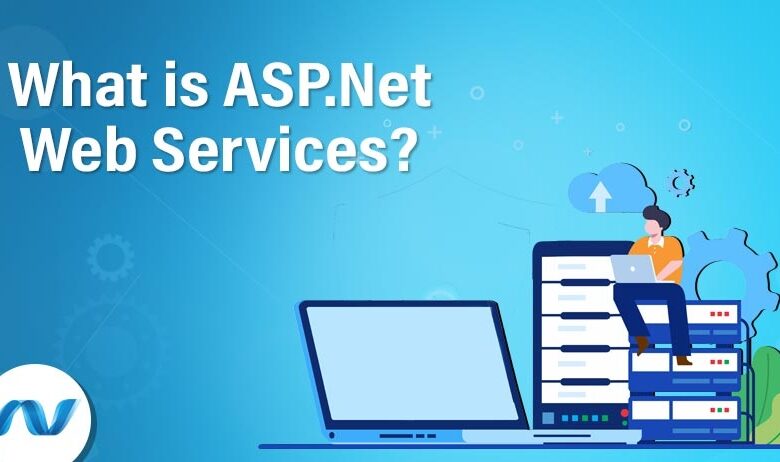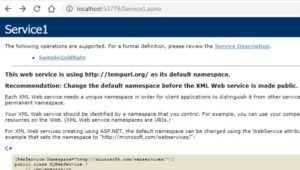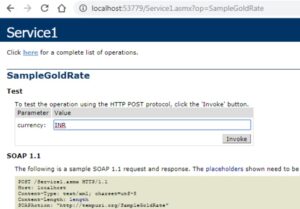What is ASP.Net Web Services? (Complete Guide)

This post will explain net web services. Imagine you own a service of gold jewelry. You build a site where users can browse your results, see their cost and book them. Now, the cost of gold fluctuates on a per hour basis and so does your jewelry. So how would you show the proper cost of your items on a real-time basis? The solution to this depends on web services. Your software would require the rate of gold from other software application every hour, let’s state a market index which updates gold costs quickly.
What is ASP.Net Web Services? (Complete Guide)
In this article, you can know about net web services here are the details below;
Your software application would then compute the cost of items based upon the updated price. Then the consumers can schedule the products at the current rate just to be picked up later from your store. Thus, a web service is simply a method of communication amongst software application spread across the internet. There are obvious other lingos involved, such as XML, web protocols, WSDL, SOAP, and so on, but do not stress. We will cover them all briefly during this asp.net web services short article. Also check Front-end vs back-end vs full stack.
Key Terminologies
– XML– Extensible Markup Language. Tags that contain just data. Any app can format an XML into any wanted format. XML is just data inside tags.
– SOAP– Simple Object Access Protocol. A protocol that explains how XML based messages will be sent out and gotten across applications.
– WSDL– Web Services Description Language. It defines the web services, their input expectations, their output descriptions and a summary of what a service can be utilized for. For e.g., there might be multiple services that supply the current rate of gold in multiple currencies and areas. So, a WSDL file sums up all those services. Interestingly, WSDL files are also written in XML.
– UDDI– Universal Description, Discovery, and Integration. An XML-based requirement that governs the creation and distribution of web services.
Why Web Services?
As always, prior to diving deeper into any subject, let us ask ourselves– why web services? What do they offer me? Why should I utilize web services? Let’s see.
Language Independent
Web services are independent of any shows writing. A web assistance that is coded in Java can be taken in by any ASP.Net application as long as both exchange data in XML formats.
Procedure Independent
Web services can be exchanged online through various procedures. HTTP and UDP are two utilized ones.
– Platform Independent: Needless to explain, web services can be consumed in any platform or running system.
– Stateless Architecture: Web services are stateless. This merely means that they supply details based only on the input specifications provided to them. There is no other aspect that changes the output for a set of inputs. I repeat, no other element.
– Scalable: Due to the simple idea of offering information based on requests, web services are extremely scalable. All consumer application should do is offer inputs, and the web service would generate output for it. There are no elegant interfaces or trendy designs. Simply plain simple information in incredibly light-weight XML format.
– Programmable: Imagine a bank which must decide whether to disburse loan to a client based upon the client’s credit history. Now, instead of using all the algorithms to calculate credit history in its own software, it can simply ask a credit company to provide the credit history of the client. Now envision hundreds of banks leveraging the credit agency’s web service. Also check webmailroadrunner.com login.
Thus, a complete job involving a humungous algorithm is encapsulated within a single program which is then exposed as a service and taken in by applications all over. Saves tonnes of effort, does not it?
– Self-Descriptive: Through WSDLs, each web service can explain itself plainly.
– Discoverable: Registrations through UDDI and unique URLs make sure that each web service across the globe is quickly visible.
Creating an ASP.Net Web Service
Let’s hit the ground and produce an easy ASP.Net Web Service which returns sample gold rate in different currencies.
– Open Visual Studio
- Go to File -> New -> Project
- Search for ‘web service’ in.Net Framework 3.5
- Select ‘ASP.Net Web Service Application Visual C#’.
- Name the task. I called it ‘sampleWebService’.
- Click Ok
– Visual Studio would create a standard web service app with the following code. This is able to run the application & would merely display ‘Hello World’ when run.
– Change the code as listed below.
– Run the service. It will open the web browser with the following link. Notification our approach ‘SampleGoldRate’. Click it.
– This opens the page where input specifications are anticipated. Go into the input specification and agree Invoke. This action would run the code and deliver the output in XML format.
– Notice the output listed below in XML formula. This can quickly be taken in by any other application.
– The description of the service can be just accessed by adding ‘? wsdl’ at the end of the URL as listed below.
Congratulations on building your very first ASP.NET Web Service.
Needed ASP.Net Web Services Skills
Thrilled to develop ASP.Net Web Services? Before you get hands-dirty, here is a small pre requisite for learning ASP.Net Web Services You should know the essentials of shows and must have hands-on with the shows language C#. It is primarily suggested as it is the main component of ASP.Net.
Also, it is suggested that ere jumping on to ASP.Net Web Services you learn about ASP.Net also. If you do not know ASP.Net, do not stress. Your knowing curve will be slightly higher in such a case. If you currently understand ASP.Net, you are all set to check out more. Also check textsheet alternatives.
The above illustration was just a pure service. Of course, real-world applications are also complex. I would advise diving in much deeper and checking out more on how ASP.Net Web Services work and what is the underlying structure and libraries supporting it.
The career in ASP.Net Web Services.
Web Services has a promising career. This is not since I claim the technology to last forever. No, Web Services just similar any other technology will soon be surpassed by a better and ingenious one. It still offers a strong career since the approach to resolving problems utilizing Web Services is going to remain in the market. There will be more recent technologies developed, but all would be based upon the idea of standardized interaction between applications through internationally accepted protocols. Integrated with the power of ASP.Net, the potential is substantial.
Conclusion
Therefore, ASP.Net Web Services assist you expose and take in codes. As soon as you master it, you might quickly produce intricate algorithms and expose them as web services for other applications and software to take in.










